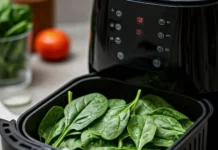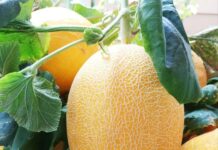Having a home garden is not only a source of fresh and delicious food, but it also brings relaxation and joy. However, maintaining a vibrant vegetable garden can be a challenge. That’s why we have compiled 7 helpful tips to help you keep your home garden green. Keep reading to find out!
1 Soak the seeds before planting
To ensure optimal growth for your home garden, it is important to start taking care of the seeds from the beginning. One crucial step is to soak the seeds in water for 6-10 hours, and then ferment them in a wet cloth for 1-2 days. When the seed shells start to crack, you can plant them in pots. This method ensures high-quality germination compared to directly sowing the seeds in pots.

Soak the seeds before sowing them in the soil
2 Choose the right soil for growing vegetables
Choosing the right soil for growing vegetables is crucial for their growth and development. The soil needs to have good moisture retention and a loose structure to provide sufficient nutrients for the plants to grow vigorously. To grow a vegetable garden on your balcony or terrace, you can use soil types such as garden soil, sandy soil, loamy soil, or clean tribat soil. However, before using them, mix the soil with additives like rice husk ash, coconut fiber, sawdust, and organic microbial fertilizer in a ratio of 5:3:2. This soil mixing process provides additional nutrients to the soil, creating favorable conditions for vegetable growth.

Choose the right type of soil for growing vegetables
3 Use manual pest control methods
To ensure the safety of your vegetables and your family’s health, it is important to avoid using pesticides. Instead, take the time to care for and prune the vegetables, remove infected leaves and weeds to prevent the rapid spread of plant diseases. You can also create homemade biological agents to kill pests in your vegetable garden. These bio-agents can be made from simple ingredients and have the ability to effectively eliminate pests and diseases without harming the environment.

Use manual pest control methods
4 Efficiently reuse and save soil
To reuse soil for growing vegetables, it is important to treat it properly before replanting. After harvesting, the soil needs to be cleaned by removing excess roots and exposing it to sunlight for a few days to kill potential pests and diseases. Next, mix the soil with nutrients or compost in a specific ratio and till it thoroughly to achieve a loose structure. This helps make the soil suitable for reuse in your vegetable garden.

Efficiently reuse and save soil
5 Properly water the vegetables
Watering your home garden is essential, especially in the city’s weather conditions. It is necessary to water the garden at least 2 times a day to ensure the plants’ water needs are met. For newly planted vegetables in containers, use a shade net or canopy to reduce strong sunlight during noon and prevent young plants from dying or wilting. Additionally, using a canopy can help prevent soil erosion and reduce excess rainwater causing flooding in the vegetable garden.

Properly water the vegetables
6 Ensure proper light for vegetables
Choosing the right direction for your vegetable garden is crucial for their growth. Each type of vegetable has different sunlight requirements, so it is important to thoroughly research the characteristics of each type of vegetable you want to grow. Ensuring sufficient light and sunshine will help your plants absorb nutrients well and grow vigorously.

Ensure proper light for vegetables
7 Consider appropriate temperatures for the plants
Understanding the optimal temperature for the growth of each type of plant is important. Planting vegetables in the right season or finding ways to reduce the temperature in the garden can help ensure the plants thrive. Creating an ideal environment for off-season vegetable growth, such as using shade nets to protect plants from strong sunlight, can be effective.

Inappropriate temperatures for the characteristics of the plants



































